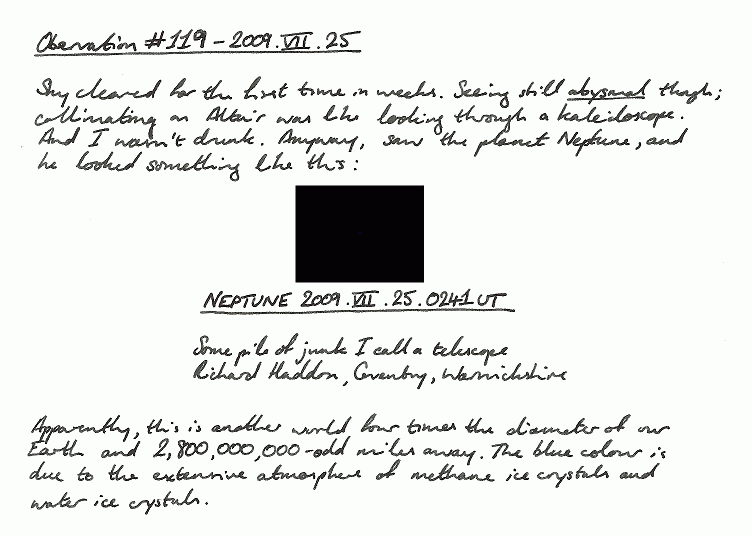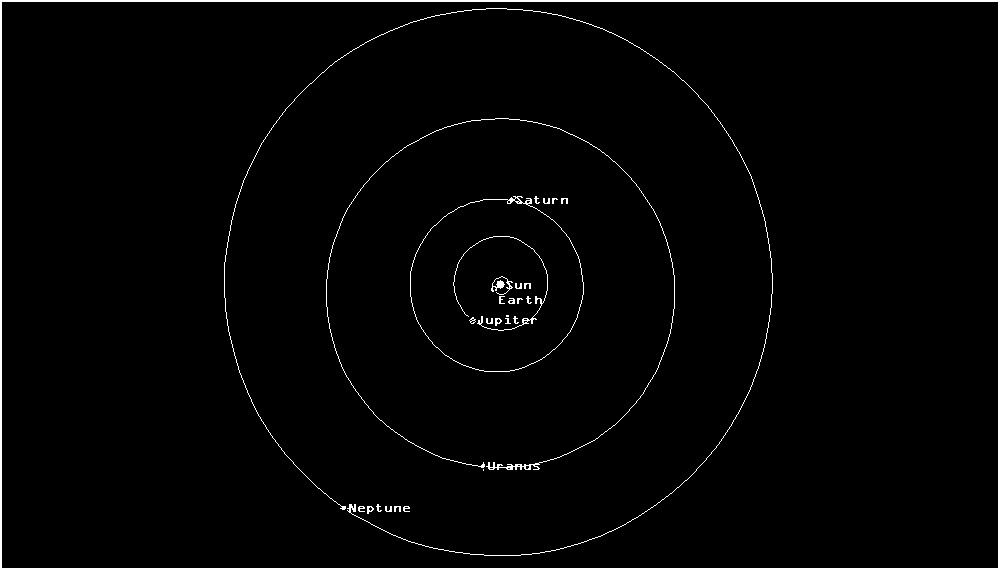
Festo Quid Potius
'Neptune's feast day! What should man
Think first of doing? Lyde mine, be bold,
Broach the treasured Cęcuban,
And batter Wisdom in her own stronghold.'
Quintus Horatius Flaccus, Odes (19 BC) Book III
A couple of my observations of the planet Neptune, the outermost giant planet of the Solar system, discovered only in 1846. Identified with the Ancient Greek god Poseidon, Neptune was the Roman god of water, and of the sea.
Neptune, four times the diameter of the Earth, three times further from the Sun than Saturn, nearly six times further out than Jupiter, and nearly twenty times further out than Mars, is at the limit of my equipment's ability to observe planet-sized objects. Neptune, though a large world, is really very remote, and it must be quite dark and empty out there; even the tiny icy worlds beyond Neptune seem irrelevant in the context of the enormous spaces which contain them. Beyond Neptune the full horror of humankind's position in the Universe presents itself in its silent enormity; having come so very far out as this, the distance to Neptune recedes into microscopic nothingness next to the yawning and indifferent void that is interstellar space; the nearest star to the Sun is nearly ten thousand times further away than Neptune again.


This diagram shows the relative position of the Sun, Earth, and Neptune, at the time of this observation. At this time Earth was just approaching opposition with Neptune.
Observation #57, 2008.VIII.4
0029 UT
With Neptune in the south now and the weather holding, made my first attempt on this the most distant planet in the Solar system (Pluto having been recently relegated to the status of Kuiper Belt object, with the discovery of numerous other such objects). Neptune at just under 2,700,000,000 miles distant is nearing opposition on 15 August and subtending his maximum arc of 2.4". The planet was not difficult to find; my chart placed it just southeast of 42 Capricorni. Deneb Algiedi was easy to find by sight and centre in the finderscope, with dimmer Nashira in the same field of view. At ×40 magnification Deneb Algiedi formed an obvious triangle with HIP107618 and TYC6363-838-1 that filled the field of view. Judging the angle to pan from Deneb Algiedi by orienting the view with this triangle, I was able to find HIP107450, then star-hop from there along the line of brighter stars 45, 44 and 42 Capricorni. Above 42 Capricorni were two faint objects, one of which was in the position predicted for Neptune, whilst the other was not on any of my charts [I have since acquired another chart which shows the latter object as being three stars of ninth or tenth magnitude very close together, stars which may or may not be associated with each other]. Having to use the full 8" of aperture to see any of these objects, there were considerable rays and halos around them. I increased the magnification to ×400, but Neptune did not resolve as the tiny blue dot which I expected, but was a faint white star with an extensive grey halo. Upon switching to 1½" aperture, Neptune was just visible as a smudge of light with a distinct blue tint. At less than one twentieth the apparent diameter of Jupiter, I was never going to see much of Neptune.
The index page is still the only way out of here.